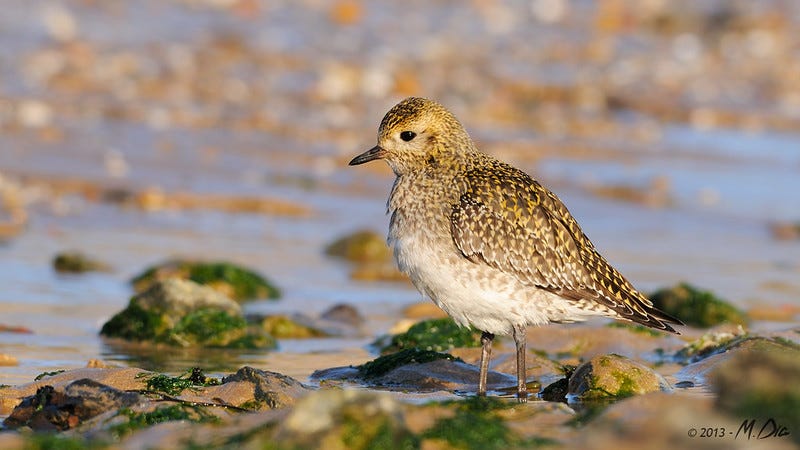If wildness spoke with a single voice, might this be it?
The flight call of the golden plover reaches our human ears as a forlorn cry - half squeak, half whistle.
All species of wader make deliciously odd noises, all the more intriguing when delivered somewhere over our heads, in the dark. The golden plover’s call, in the dead of night, is particularly eerie.
In this recording we can hear a range of different noises.
The first few are the kind of sound most often made by birds passing overhead (the one that might just give us the chills after dark).
Later on the two-part ‘doo-dyeeoo’ is the call given territorially on summer grounds. There’s also the panicky chattering, which sounds as though it gets stuck on repeat. This can be heard any time of year when plovers are gathered together, including sometimes during flight.
One of the reasons birds fascinate many of us (me included) is the way they spend time in remote environments that we find inhospitable, as well as living as our near neighbours. The golden plover very much lives out this double life.
In summer they are creatures of high moors and tundra. Around forty to fifty thousand pairs breed in the UK, in areas such as the Welsh and Scottish uplands, the Scottish Western Isles and the Peak District of England. Along with red grouse and meadow pipits, they may be one of the few species to be encountered in remote, treeless places, and when we do find them they are often unseen in the heather, revealed only by those calls.
In the autumn and winter, golden plovers seek lower altitudes. They gather in great flocks on estuaries and marshes, but also on grasslands and ploughed fields, sometimes close to towns and villages, and very often in the company of the better-known lapwings.

Our relatively small resident population swells with hundreds of thousands more from Iceland and Scandinavia, where most of Europe’s golden plovers breed.
It is during this great displacement, and when they are pushed around by spells of cold winter weather, that their little piping call might be heard, quite unexpectedly, overhead.
Nocturnal migrants pass quickly unseen, but in the daylight the sound may lead you to the sight of a sharp-winged, fast-moving bird. This speed is especially noticeable when a field dotted with lapwings and golden plovers is disturbed: the golden plovers rapidly coalesce into a tight flock, which whizzes around much more quickly and nimbly than their bigger, broad-winged cousins.
And while lapwings are generally rather more celebrated, golden plovers have influenced human culture in their own unique way. Questions over how fast they fly led to investigations that culminated in the creation of the Guinness Book of Records.
New! Want to revisit a bird from the archive? Try this A-Z with links to all the shrieks so far.
Next time: Buzzard
Media credits:
Golden plover image by Mickaël Dia on Flickr, reproduced under CC BY-ND 2.0 licence.



